Posts Tagged ‘attorney’
Property Owners Are Responsible for Clearing Snow and Ice
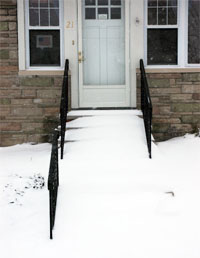 With snow in the forecast, now is the time to dig out your shovel. Clearing snow from your property has always been the right thing to do, but it is now also a requirement under Massachusetts law.
With snow in the forecast, now is the time to dig out your shovel. Clearing snow from your property has always been the right thing to do, but it is now also a requirement under Massachusetts law.
With the case of Papadopoulos v. Target Corporation, in July 2010 the Supreme Judicial Court abolished the long-standing legal distinction between natural and unnatural accumulations of snow and ice. Property owners are now required to clear both types of snow fall and may be held liable if there is a snow and ice injury on their property.
Here are a few tips from our Boston personal injury lawyers:
Remember to salt. Salt your driveway early in the storm and regularly.
Know how to use your snow blower. Turn it on before the snow fall and read the instructions. In between storms, keep it covered or in a garage.
Remember everyone who travels. You are responsible for clearing driveways, paths and all areas which can be reasonably accessed by invited guests as well as passersby and mail carriers.
Watch for tree branches. If tree branches fall on your property during the snow, consider making cuts before the next storm so no one is hurt.
Hire a snow plow. During heavy snow storms, consider hiring a snow plow.
Clear areas for emergency professionals. Help dig out fire hydrants and storm drains in your neighborhood.
Call about downed wires immediately. If you come across a downed power line, call your police department and ask them to call the utility company. Never attempt to clear the snow around it.
Stay off the streets. In the early hours of a snow storm, pedestrians can interfere with municipal plows.
Read More
Medical Device Recall: Stryker Rejuvenate and ABG II Hip Implants
The year 2012 saw another major hip replacement recall which may require an intensive treatment plan for patients.
In July 2012, Stryker recalled two hip replacements, the Rejuvenate and ABG II modular-neck stems. Stryker initiated the voluntary recall due to the potential risks for fretting and corrosion at the junction of the metal stem and metal neck.
Several months later, product liability lawsuits have been filed in a few states and patients are still learning what the recall may mean for them. The recall came two years after DePuy Orthopedics recalled its all-metal hip implant, the ASR XL Acetabular System, in 2010. A study showed the DePuy hip implant failed in one of eight patients and required they undergo a second surgery within five years – compared to the industry standard of 15.
The DePuy hip implant caused friction between the metallic ball and socket components and injuries such as bone fractures, trouble walking and metallosis, a painful condition which occurs when metallic particles appear in a patient’s blood stream.
With the Stryker recall, the company states the incidence of complications is extremely low and that patients who experience pain and swelling should speak with their surgeon. If a patient does require a second surgery, it may be more complex than in the DePuy recall. The neck stem of Stryker’s hip implant was implanted tightly into the femur bone to stay permanently. There may be potential for complications such as bone fractures.
If you have a Stryker hip implant, you should have been contacted by your surgeon about the recall. If not, you should contact them now as well as an experienced medical device lawyer, who can represent your interests.
Contact an Experienced Hip Implant Recall Lawyer The Boston product liability lawyers at Breakstone, White & Gluck have over 100 years combined experience handling cases involving defective medical devices and pharmaceuticals. If you have been injured, it is important to learn your rights. For a free legal consultation, contact us today toll-free at 800-379-1244 or 617-723-7676 or use our contact form.
Related: Stryker Initiates Voluntary Product Recall of Modular-Neck Stems, Food and Drug Administration.
Product Liability: Infant Recliner Recall Sought After 5 Deaths
 A manufacturer of baby recliners involved in five infant deaths is now the target of a lawsuit filed by the Consumer Product Safety Commission (CPSC).
A manufacturer of baby recliners involved in five infant deaths is now the target of a lawsuit filed by the Consumer Product Safety Commission (CPSC).
The CPSC filed a complaint against Baby Matters, LLC of Berwyn, Pennsylvania on Dec. 5 after the company refused to issue a voluntary recall of the Nap Nanny Generation One and Two and Chill models. The CPSC is aware of four infants who have died in Nap Nanny Generation Two recliners and one in a Chill model. It has received over 70 additional reports of children nearly falling out of the defective product.
The CPSC complaint alleges the company’s recliners contain defects in design, warnings and instructions, which pose a substantial risk of injury and death to infants. It seeks an order requiring the firm notify the public of the defect, remove it from store shelves and offer consumers a full refund. The company’s website and media reports state it has gone out of business as a result of its legal costs.
Some 155,000 of the recliners have been sold since 2009. The company sold 5,000 Nap Nanny Generation One models and 50,000 Nap Nanny Generation Two models between 2009 and early 2012. Both are now discontinued. A recall was issued in July 2010 announcing Generation One owners would receive an $80 coupon and improved instructions and warnings to consumers who owned the Generation Two Nap Nanny recliner.
The company developed the Nanny Chill model as an improvement. One hundred thousand Nap Nanny Chill models have been sold since January 2011. The recliners are priced about $130.
The 2010 recall came after the CPSC learned about one death that occurred in a Nap Nanny recliner and received 22 reports of infants hanging or falling out over the side, even though most had been harnessed in.
In a statement on the company’s website, owner/founder Leslie Gudel, said, “We do not believe the complaint has merit and stand behind the safety of our product when used as instructed.”
Later in the statement, she said, “No infant using the Nap Nanny properly has ever suffered an injury requiring medical attention. The Nap Nanny was designed and constructed for use only on the floor with the harness secured.”
Related:
Five infant deaths Prompt CPSC to Sue Manufacturer of Nap Nanny and Chill Infant Recliners, Consumer Product Safety Commission.
A message from Leslie Gudel – owner/founder Nap Nanny
Feds file suit against Nap Nanny maker after 5 infant deaths, 70 complaints, ABC News.
Read More
Head Injuries: Boston University Study Investigates Brain Damage in Deceased Athletes
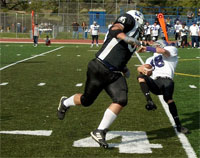 In a new study, Boston University School of Medicine researchers autopsied the brains of deceased athletes who suffered repeated concussions and found the majority showed signs of a degenerative brain disorder called chronic traumatic encephalopathy (CTE).
In a new study, Boston University School of Medicine researchers autopsied the brains of deceased athletes who suffered repeated concussions and found the majority showed signs of a degenerative brain disorder called chronic traumatic encephalopathy (CTE).
The researchers autopsied 85 deceased brain donors, including 82 athletes. This included 34 professional football players. Researchers found a buildup of an abnormal brain protein called tau in 68 brain donors. By contrast, they autopsied 18 brains with no known trauma and found no protein buildup. Tau is associated with CTE, a degenerative condition linked to memory loss, depression and dementia.
The autopsies found the most extensive brain damage in the professional athletes who died after age 50. They experienced the most severe memory loss and personality changes in their final years.
The football players included National Football League (NFL) Hall of Famers running back Ollie Matson and Colts tight end John Mackey. Both died last year after suffering from dementia.
The researchers also described the four stages of CTE. In the first stage, the injured individual experiences headaches and trouble concentrating. Symptoms progress to depression, aggression and short-term memory loss, followed by serious cognitive impairment and dementia.
Last spring, more than 3,000 former players filed a lawsuit against the National Football League, claiming the league hid information about football-related head injuries. The NFL claims the head injury lawsuits have no merit and asked a federal court in Philadelphia to dismiss more than 100 injury claims, saying they should be resolved through the NFL’s collective bargaining process rather than the courts.
Many states, including Massachusetts, have also implemented laws in recent years which mandate concussion training for high school athletes and provide rules for how long students must sit out after a head injury.
The research was reported in the journal Brain.
Related:
Boston researcers find new evidence linking concussions to permanent brain injury, The Boston Globe.
Evidence of brain damage from repeat concussions mounts, The Boston Globe.
NFL asks federal judge to dismiss concussion lawsuits, NFL.com.
BU-Led Research Maps the Route to Dementia, BU Today. Read More
Gas Explosion: Springfield Recovers as State Investigation Begins
State Fire Marshal Stephen Coan said human error is to blame for the massive gas explosion in Springfield which injured 21 people, damaged three dozen buildings and leveled a night club.
The explosion at Scores Gentlemen’s Club on Worthington Street ignited Friday after Columbia Gas of Massachusetts sent crews to investigate a report of a gas odor. One worker accidentally punctured a gas line at the foundation of the building with a metal probing tool. The company said there were older gas line markings on the nearby sidewalk which were incorrect.
State and local officials held a press conference Sunday and announced Columbia Gas had performed a block-by-block investigation of the area and determined the city’s gas systems are now safe and functioning.
Coan said they have determined the source of the fuel and activities which led to the gas explosion. He said the state Department of Public Utilities will continue the investigation into Columbia Gas related to their response to the incident.
Coan said investigators have not determined the source of the initial odor and may not be able to now that the building is no longer standing. But he said there was no leak of gas from the main in the street.
“We have determined that human error, as opposed to a fault in the gas infrastructure, is what the cause of the explosion was,” he said.
He also said there were too many possible ignition sources inside the multi-story building to identify what had triggered the gas explosion.
Those sent to the hospital include 12 of the 14 Springfield firefighters who initially responded. All have been released. News reports say others injured include gas workers, a water and sewer worker and a local TV cameraman.
Today, residents and business owners gathered at Springfield City Hall carrying lists of lost personal belongings and damaged property. Columbia Gas has promised to cover the expenses, city officials say.
Related:
Springfield explosion cause: ‘Human error,’ Massachusetts fire marshal says, The Republican.
Raw Video: Springfield Gas Explosion, The Boston Globe.
Read More
Gas Explosions: More than 3,300 Gas Leaks in Boston
 There are more than 3,300 natural gas leaks in Boston’s aging underground pipelines, a new Boston University study has found. Six areas had gas levels which exceeded the amount needed to trigger a gas explosion.
There are more than 3,300 natural gas leaks in Boston’s aging underground pipelines, a new Boston University study has found. Six areas had gas levels which exceeded the amount needed to trigger a gas explosion.
Those gas leaks were repaired while no action has been taken on the others, which the state Department of Public Utilities and gas companies described as a small risk for gas explosions. Dorchester had the largest number of gas leaks, 951 breaks over 158 miles of cast-iron gas mains. However, several areas had a greater number of leaks per mile, including East Boston, Jamaica Plain, Brighton, Charlestown and South Boston.
The study into gas leaks and explosion risks was conducted by an associated professor from Boston University’s Department of Earth and Environment and a researcher from Duke University. It was recently published in the journal Environmental Pollution and reported on by the Boston Globe.
The two researchers drove all 785 miles of Boston’s streets to test the air for methane, the primary ingredient in natural gas. The two measured for methane levels which exceeded 2 parts per million – the normal amount in the air.
Natural gas is colorless and odorless, but uses the chemical additive mercaptan which emits a distinct rotten eggs odor to signal a leak. Gas leaks can occur in several ways, often when underground pipes crack as they age or in cold weather or when a pipe is struck by construction equipment.
Some people want to hold gas companies more accountable for fixing gas leaks in Massachusetts. A bill sponsored by state Representative Lori Ehrlich of Marlbehead would require a timeline for fixing the most serious leaks. Utilities would be required to notify police and fire of the gas leak locations. The bill unanimously passed the House of Representatives in June and is now before the state Senate.
The Conservation Law Foundation plans to release a report on natural gas leaks soon. An official suggested the state could require timelines for gas companies to repair various grades of leaks and improve accelerated reimbursement rates for gas companies that replace old gas lines.
Related:
- Boston riddled with mostly small natural gas leaks, Boston University study finds, Boston Globe.
- Gas leaks graphic, Boston Globe.
- Breakstone, White & Gluck settles wrongful death lawsuit for explosion’s victim’s family for $7.5 million, July 2012.
Toy Safety: 10 Worst List Highlights Dangerous Toys
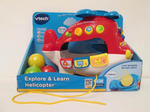 As the holiday shopping season begins, a watchdog organization is reminding consumers that not every toy on the shelves is safe.
As the holiday shopping season begins, a watchdog organization is reminding consumers that not every toy on the shelves is safe.
The organization W.A.T.C.H., or World Against Toys Causing Harm, Inc., has released its annual list of 2012 “10 Worst Toys.” W.A.T.C.H. says the toys on the list can cause children to choke, have sharp parts and carry misleading labels. The defective toys can be found online and in stores, at major retailers such as Toys “R” Us, Walmart and Amazon.
Dangerous toys seriously injure and kill children every year in the United States. In 2010, 17 children were killed in toy-related accidents. The majority were related to choking on balloons, small balls and rubber balls. The same year, about 181,500 children younger than 15 were treated in hospital emergency departments for toy-related injuries.
If you are shopping for young children, take a look at this year’s “10 Worst Toys” list. We have also provided a list of websites to help you make safe purchases below.
The Avengers Gamma Green Smash Fists
Potential for blunt impact injuries and there are no warnings on the package.
Playful Xylophone
Potential for choking injuries.
Power Rangers Super Samurai Shogun Helmet
Potential for impact and puncture wound injuries.
Water Balloon Launcher
Potential for choking and facial injuries. Varying age recommendations online and on the package.
N-Force Vendetta Double Sword
Potential for Impact injuries.
Explore & Learn Helicopter
Potential for strangulation and entanglement injuries. Cord is twice the length allowed by law.
Spinner Shark 4-Wheel Kneeboard
Potential for impact injuries.
Dart Zone Quick Fire 12 Dart Gun
Potential for eye injuries.
Bongo Ball
Potential for impact and other serious injuries. Children are encouraged to climb inside the inflatable ball. The toy and the packaging have contradicting instructions about supervision.
Magnetic Fishing Game
Potential for choking injuries. Different age recommendations online and on the packaging.
Related:
Toy Safety Fact Sheet, Safe Kids.
Toy Safety, U.S. PIRG.
Dangerous Toy Report Details Lead, Choking Hazards, Breakstone, White & Gluck.
Drowsy Driving Accidents Are Preventable
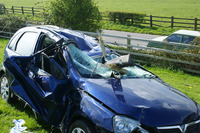 Younger drivers are the most likely to drive drowsy, with one out of seven drivers ages 16-24 admitting to nodding off behind the wheel at least once in the past year, a National Sleep Foundation study found.
Younger drivers are the most likely to drive drowsy, with one out of seven drivers ages 16-24 admitting to nodding off behind the wheel at least once in the past year, a National Sleep Foundation study found.
The National Sleep Foundation released its study for its annual campaign, Drowsy Driving Prevention Week, from Nov. 12-18. The foundation’s study also found one in 10 of all licensed drivers admitted to falling asleep during the past 12 months. The AAA Foundation for Traffic Safety estimates that about one in six deadly car crashes involves a drowsy driver. In addition to drivers who are falling asleep, the National Sleep Foundation’s 2011 Sleep in America poll found that among those who drove, 52 percent indicated they have driven drowsy and 37 percent had done so in the past month.
Across the country, four states have laws related to drowsy driving: New Jersey, California, Utah and Florida.
The laws vary, providing for a mix of educational campaigns, research and in New Jersey, a law criminalizing drowsy driving. Maggie’s Law states a drowsy driver – one who has not slept in 24 hours – qualifies as a reckless driver who can be convicted of vehicular homicide. The law was passed in 2002 following a car accident which claimed the life of 20-year-old college student Maggie McDonnell. The student was struck by a driver who had not slept for 30 hours and had been using drugs.
The jury deadlocked in the first trial involving the fatal car crash. During the second trial, the defense lawyers argued that there was no law against falling sleep behind the wheel in New Jersey so the driver did nothing wrong. The driver received a suspended jail sentence and $200 fine.
In Massachusetts, Sen. Richard T. Moore, (D-Uxbridge) has proposed “Rob’s Law,” which was placed under a study order this summer. The legislation is named for Major. Robert Raneri of the United States Army Reserve, who was killed in 2002 by an admitted drowsy driver on his way to work at Fort Devens.
The bill would make it a criminal offense for drivers to drive drowsy in Massachusetts. In cases where drivers cause a car accident resulting in death, they could be charged with homicide by a motor vehicle while under the influence of an intoxicating substance.
Drowsy driving car accidents can be prevented through awareness and good decisions. Our Boston car accident attorneys offer this list of signs which should serve as warnings not to drive:
- Difficulty focusing, frequent blinking and heavy eyelids.
- Driving mistakes such as drifting from your lane and swerving.
- Not seeing other cars until they are immediately near you.
- Daydreaming.
- Trouble keeping your head up.
- Disobeying traffic lights or failure to see them change until another driver honks.
- Missing traffic exits.
- Not remembering traveling the last few miles.
- Yawning.
- Restlessness, irritability or aggression.
Other steps to avoid drowsy driving and car accidents:
- Get a good night’s sleep of seven to nine hours at night.
- Do not be in a rush to arrive at your destination.
- Avoid driving long distances alone when you can.
- Avoid alcohol and medications that cause drowsiness.
- Consume caffeine if you need it.
- Avoid driving at times you are normally asleep.
- For long distance travel, take a break every 100 miles or 2 hours. Get a snack, change drivers, take a walk.
- Make sure you eat regular meals and snacks.
- If you need, stop and find a safe place to nap.
- Avoid alcohol and medications that cause drowsiness.
Related:
Bill S.1773: An Act relative to drowsy driving.
Drowsy Driving, National Sleep Foundation.
Read More
Breakstone, White & Gluck Honored as Super Lawyers for Ninth Year
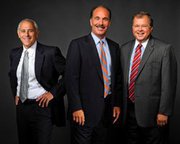 Breakstone, White & Gluck announces its lawyers have been recognized as 2012 Super Lawyers. It is the ninth consecutive year the firm’s lawyers have been honored.
Breakstone, White & Gluck announces its lawyers have been recognized as 2012 Super Lawyers. It is the ninth consecutive year the firm’s lawyers have been honored.
Attorney Marc L. Breakstone
Attorney Breakstone has been recognized as one of the Top 100 New England Super Lawyers 2012, one of the Top 100 Massachusetts Super Lawyers 2012 and a Massachusetts Super Lawyer in the category of Personal Injury Plaintiff: Medical Malpractice. This is the third time attorney Breakstone has been named a Top 100 New England Super Lawyer, his sixth year as a Top 100 Massachusetts Super Lawyer and his ninth as a Massachusetts Super Lawyer. Breakstone also holds an AV rating with Martindale Hubbell (the highest professional and ethical ranking) and has consistently maintained a “Superb”10.0 rating on AVVO.
Attorney Breakstone is a graduate of Northeastern University School of Law and specializes in personal injury and medical malpractice cases. Click here to read his bio.
Attorney David W. White
Attorney David W. White has been recognized as a 2012 Massachusetts Super Lawyer, Personal Injury Plaintiff: General. It is his ninth consecutive year on the list. Attorney White has also been named to the Top 100 Massachusetts Super Lawyers list four times and to the Top 100 New England Super Lawyers list twice. White also holds an AV rating with Martindale Hubbell (the highest professional and ethical ranking) and has consistently maintained a “Superb”10.0 rating on AVVO.
He is a graduate of Northeastern University School of Law and specializes in personal injury, medical malpractice and bicycle accident cases. Click here to read his bio.
Attorney Ronald E. Gluck
Attorney Ronald E. Gluck has been named a 2012 Massachusetts Super Lawyer, Personal Injury Plaintiff: General. He was selected to the list for the eighth consecutive year. He was also selected to the list of New England Super Lawyers for the sixth year in a row. Attorney Gluck specializes in catastrophic personal injury cases involving car accidents, construction accidents and medical device and pharmaceutical product liability. Gluck has an AV rating with Martindale Hubbell (the highest professional and ethical ranking) and has consistently maintained a “Superb”10.0 rating on AVVO.
He is a graduate of the Case Western Reserve University School of Law. Click here to read his bio.
About Super Lawyers
The Super Lawyers list recognizes the top 5 percent of lawyers in the state. Super Lawyers selects attorneys using a rigorous, multiphase process that includes peer nominations and evaluations and independent research. Each candidate is evaluated on 12 indicators of peer recognition and professional achievement. The object is to create a credible, comprehensive and diverse listing of outstanding attorneys that can be used as a resource for attorneys and consumers to find the best lawyer for their case.
The New England Super Lawyers list is published each fall as a print supplement to Boston Magazine.
Read More
Meningitis Outbreak Prompts Federal and State Action on Compounding Pharmacies
A Massachusetts congressmen is proposing legislation that would give the Food and Drug Administration (FDA) greater authority over compounding pharmacies in the wake of a 19-state meningitis outbreak that has killed 29 people.
Rep. Edward Markey, (D., Mass.) last week announced the legislation, which would allow the FDA to inspect and regulate pharmacies partly based on their product volume.
Currently, states hold most of the authority over compounding pharmacies and the FDA is limited to inspections. It cannot require a compounding pharmacy to follow any operating standard.
Markey’s proposal aims to add oversight for compounding pharmacies which produce larger quantities. It does not target the traditional compounding pharmacy, which makes drugs for individual patients with a prescription.
The meningitis outbreak is being blamed on tainted steroid shots made by New England Compounding Center (NECC) of Framingham. As of Nov. 2, 395 people had contracted fungal meningitis, including the 29 deaths. Nine patients have fungal joint infections from steroid injections to the knee, hip, shoulder and elbow.
Officials say the defective drugs were shipped to 23 states and up to 14,000 patients may have been exposed. None of the contaminated product was distributed to Massachusetts healthcare providers or hospitals.
Markey’s proposal follows other attempts for regulation. In 1997, Congress passed a law giving the FDA authority to regulate large compounding pharmacies which advertised their products. But the U.S. Supreme Court struck down the law in 2002.
In Massachusetts, the Board of Registration in Pharmacy also moved to tighten controls last week, unanimously approving rules which allow the state to track drugs made by compounding pharmacies. The state’s goal is to determine whether a compounding pharmacy is violating its license and producing bulk quantities like a manufacturing facility. State officials say NECC was in violation of its license.
NECC has been shut down by the state and all of its products have been recalled. Another compounding pharmacy under the same ownership, Ameridose of Westborough, also recalled all of its drugs last week. On Oct. 10, Ameridose agreed to a temporary shutdown, which has been extended until Nov. 19.
State officials are seeking permanent surrender of NECC’s pharmacy license and permanent license revocation for NECC’s three pharmacists. The state has also started inspecting other compounding pharmacies, one of which has agreed to surrender its license after violations were found.
The Federal Bureau of Investigation (FBI) has launched a criminal investigation and at least three people have also filed personal injury lawsuits, reports USA Today.
Related:
Insight: How compounding pharmacies rallied patients to fight regulation, Reuters.
Harsh punishments rare for drug compounding mistakes, USA Today.
Pharmacy board adopts new rules, The Boston Globe.
Meningitis outbreak nears 400 infected as lawmakers push for tougher regulation, Associated Press/CBS News.
Read More

